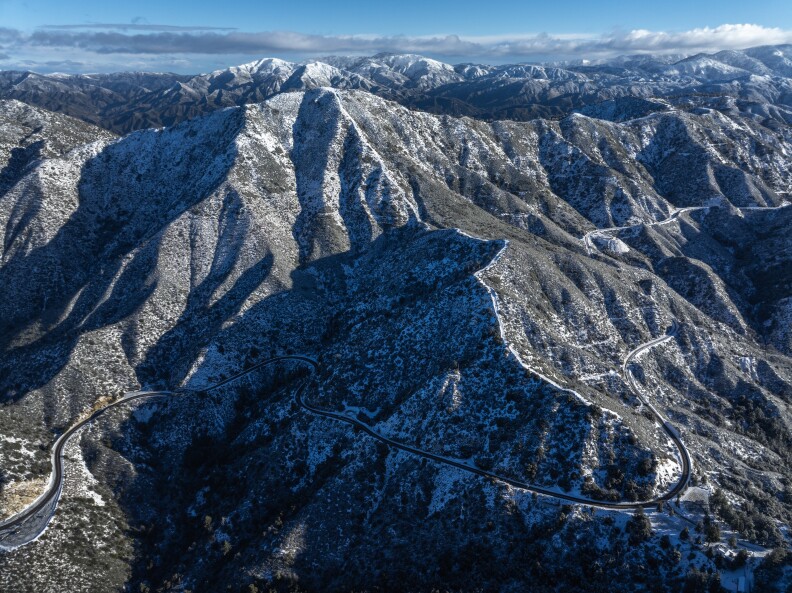Despite Big Storms, California Still Needs More Snow

In just a handful of days, parts of Los Angeles were inundated with as much rain as we typically get in an entire year. Wonderful for local reservoirs, groundwater, plants and animals.
However, when it comes to snowpack up in the Sierra Nevada — California’s all important water source — conditions aren’t yet where we want them to be. While the latest round of storms did drop a fair amount of snow, we’re still only at about 50% of average for April 1, the end of our rainy season.
“Things are looking a lot better after the last eight days,” said Andrew Schwartz, lead scientist of the UC Berkeley Central Sierra Snow Lab. “If we dry out and we get very little for the rest of the season we’ll be in rough shape.”
We received 4.5" (11.5 cm) of #snow over the last 24 hours. Clear skies overnight led to cold temperatures this morning with our current temp being 12°F (-11°C).
— UC Berkeley Central Sierra Snow Lab (@UCB_CSSL) February 8, 2024
We are entering a drier period over the next week and we'll see warming temperatures as well. #CAwx #CAwater pic.twitter.com/mZQnkXXWqs
-
At magnitude 7.2, buildings collapsed
-
Now spinning in front of Santa Monica apartments
-
Advocates seek end to new LAUSD location policy
In addition to man-made reservoirs, snowpack is a critical store of water. As temperatures warm throughout the spring and summer, the snow melts, and flows into our rivers and reservoirs, giving us a vital resource into the hot months.
Up at the UC Berkeley Central Sierra Snow Lab, they’ve seen both fluffy white snow and the denser Sierra cement that they hope for, the latter of which has a higher water content.
The problem is that temperatures in the central Sierra were around two degrees above normal in November and three degrees above normal in December. January’s seen some particularly cold days, but warmer conditions have also been present. All of that heat impacts snowpack.

“We are seeing the snowpack season really shorten,” said Schwartz. “There is the fingerprint of climate change on everything that happens up here and the overall changes to our snow season.”
In the shoulder months of October/November, warmer weather can mean much needed precipitation falls more as rain than snow, keeping the snowpack from building. And warm weather in April/May means the snowpack starts to melt earlier, and at a higher rate, potentially impacting water availability later in the year.
It's unclear what sorts of water limits California residents will see this year, though we'll have a better idea come March when the state updates their allocation numbers.
Fortunately, weather models are hinting at wet conditions on the way.
-
The state's parks department is working with stakeholders, including the military, to rebuild the San Onofre road, but no timeline has been given.
-
Built in 1951, the glass-walled chapel is one of L.A.’s few national historic landmarks. This isn’t the first time it has been damaged by landslides.
-
The climate crisis is destabilizing cliffs and making landslides more likely, an expert says.
-
Lifei Huang, 22, went missing near Mt. Baldy on Feb. 4 as the first of two atmospheric rivers was bearing down on the region.
-
Since 2021, volunteers have been planting Joshua tree seedlings in the Mojave Desert burn scar. The next session is slated for later this Spring, according to the National Park Service. Just like previous times, a few camels will be tagging along.
-
There are three main meteorological reasons why L.A. is so smoggy — all of which are affected when a rainstorm passes through and brings clearer skies.






